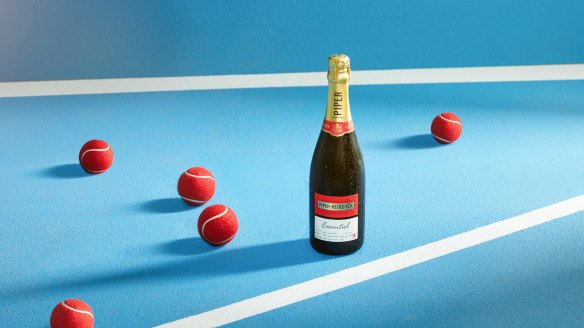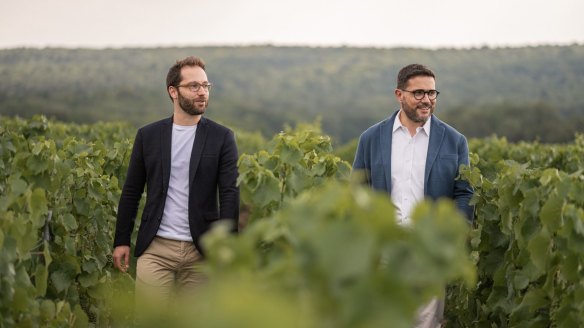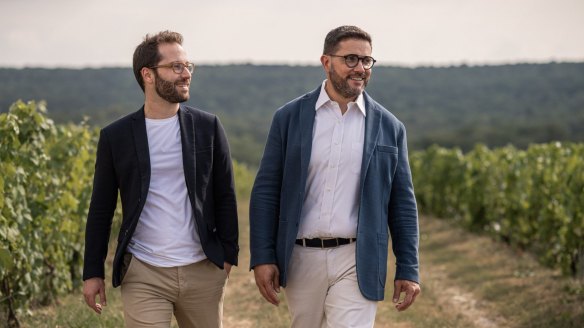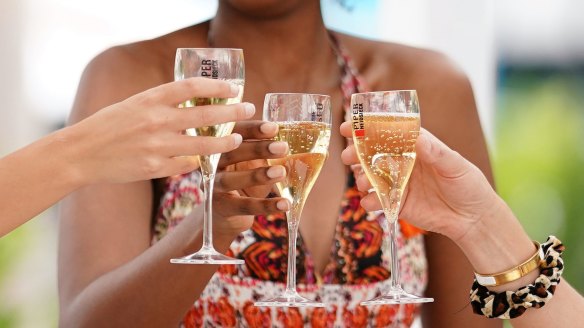How one of the world's great champagne houses is embracing sustainability

When people ask which wine blew my mind in 2022, the answer is swift. It was the Piper-Heidsieck Hors-Série 1982. One sip and I crumbled. It was tear-inducing.
The encounter happened in Reims, France, during a tasting with Piper-Heidsieck's young chef de cave (chief winemaker) Emilien Boutillat, one of the youngest chefs de cave in champagne's history.
The wine struck a chord for a variety of reasons. For one, the nostalgia induced by its graffiti-inspired packaging. "The '80s, particularly 1982, was the beginning of street art and was an important era for hip-hop," Boutillat says. "I think it's important to 'pimp' the world of champagne. We have exceptional wine here and we want to share it and have a different way to speak about that."

There's always something special about sipping a wine from your birth year. Mine, by all accounts, was a stellar vintage in Boutillat's neck of the woods. "1982 was perfect weather," he says. "Quite dry, not so much rain, good ripeness, great quality and good yields. In fact, it was one of the biggest harvests in the history of champagne."
Just 2500 bottles of the Hors-Série 1982 were released worldwide, 96 of which made their way to Australia where it is sold for $750 a bottle. Nice, if you can afford it.
It wasn't the price tag that brought tears to my eyes. It was the moment it encapsulated. When Boutillat and I raised a glass, it was to toast a more creative and sustainable future.
When people ask me what I do for a living, I say I legally sell pleasure.Benoit Collard, CEO
Boutillat's family has grown and made wine in Champagne since 1765. He joined the Piper-Heidsieck team in 2018 after clocking up winemaking experience around the world. "My family has lived in the same village for more than 280 years," he says. "I grew up helping my father in the vineyards, so the continuity of that is great."
In September 2022, Piper-Heidsieck became the first champagne house in the world to receive B Corp certification. In doing so, it joined a global movement focused on positive social and environmental change.
To date, 6286 companies across 159 industries and 89 countries are B Corp certified. Approximately 21 of those are wineries. In Australia, B Corp certified beverage companies include Minimum Wines, Brick Lane Brewing Co, Cape Byron Distillery, Stone & Wood Brewing Company, 4 Pines Brewing and Capital Brewing Company.

In a nutshell, B Corp certification not only evaluates a brand's environmental impact, but also its core values, workspace culture and the impact it has on society. For Piper-Heidsieck, this includes achieving net-zero carbon emissions before 2050 (in line with the Paris Agreement), the use of 100 per cent renewable electricity, enhancement of biodiversity, and investment in the VitiBot; an autonomous robot that removes weeds from vineyards without using pesticides.
"When we recruited Emilien he was barely 31 years old," Piper-Heidsieck CEO Benoit Collard says. "He is enthusiastic about social impact and is engaged in this journey with us."
The brand has also used the lightest bottles on the market (835 grams) since 2010. "It only makes sense to go for the lightest bottle," Collard says. "There are many opportunities for us to express our identity outside of the bottle shape. Like being showcased at the Australian Open."

Partnership with the tennis event as its official champagne partner is now in its fifth consecutive year.
"When people ask me what I do for a living, I say I legally sell pleasure," Collard says. "Champagne brings joy and happiness and you see that at the Australian Open. There's no question why the players call it the Happy Slam."
Collard fell in love with Australia and its wines while studying part of his MBA in Melbourne. "The thing I love most is the people. I feel at ease with the culture here. Australia has embraced diversity and culture. You embrace foreigners and that mindset really seduced me."
Diversity also played a big factor in the brand's B-Corp certification. More than 51 per cent of the brand's managers are women. "Recognition of diversity has to be seen in all business practices and in the culture of the company," Collard says.
Donations to meaningful causes also play a role, in this case, investment in Time for the Planet, a mission-driven non-profit organisation fighting against global warming.
"The great thing with this is that it's completely transparent and public," Collard says. "Anyone who wants to know more about our practices can look at the results of the audits. If anyone in Australia is willing to join the adventure, we will be happy to help with much information as required."
The champagne house has long been driven by a collaborative, pioneering spirit. When founder Florens-Louis Heidsieck created the brand in Reims in 1785, it was with the aim of dazzling Marie-Antoinette. It worked. The last queen of France before the French Revolution was its first ambassador.
Bold creative moves followed. In 1885, star jeweller Pierre-Karl Faberge created a bottle adorned with gold, diamonds and lapis lazuli in celebration of the brand's centennial. It was the first of many bling-packed collaborations with jewellers. Hollywood stars Ava Gardner, Humphrey Bogart, Clark Gable, Fred Astaire and Marilyn Monroe were fans, too.
The red-carpet love continued as champagne was poured at the Oscars and the Cannes Film Festival. When the brand partnered with fashion designer Jean Paul Gaultier, the result was a special release bottle bound in a red leather corset. Viktor & Rolf went on to create an upside-down version of the Piper-Heidsieck Rosé Sauvage, while shoe designer Christian Louboutin partnered with the brand to create a crystal champagne flute in the shape of a stiletto.
Trends may come and go but the focus on a more sustainable and inclusive future is here to stay. "Certification is just the start of the journey," Collard says. "When I wake up in the morning, I smile when I think about what I do for a living. I'm proud of it because the way we do things here is meaningful and done with authenticity. We're very happy to be the first champagne house to be B Corp certified and we'll be the first to celebrate the second, 10th and hopefully 100th."
